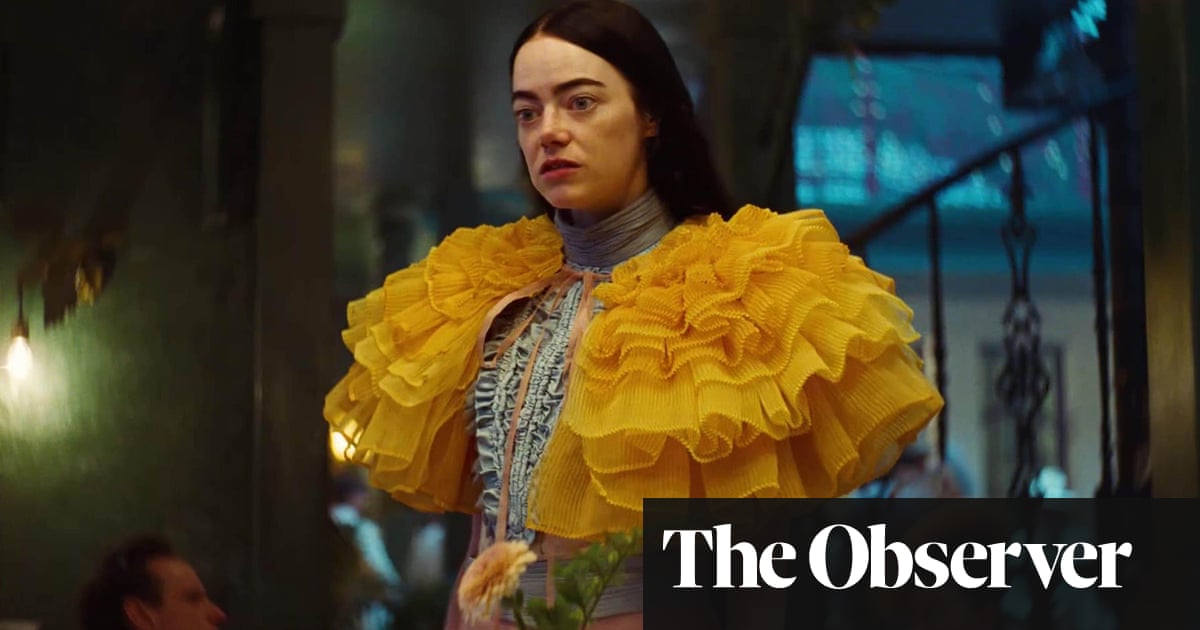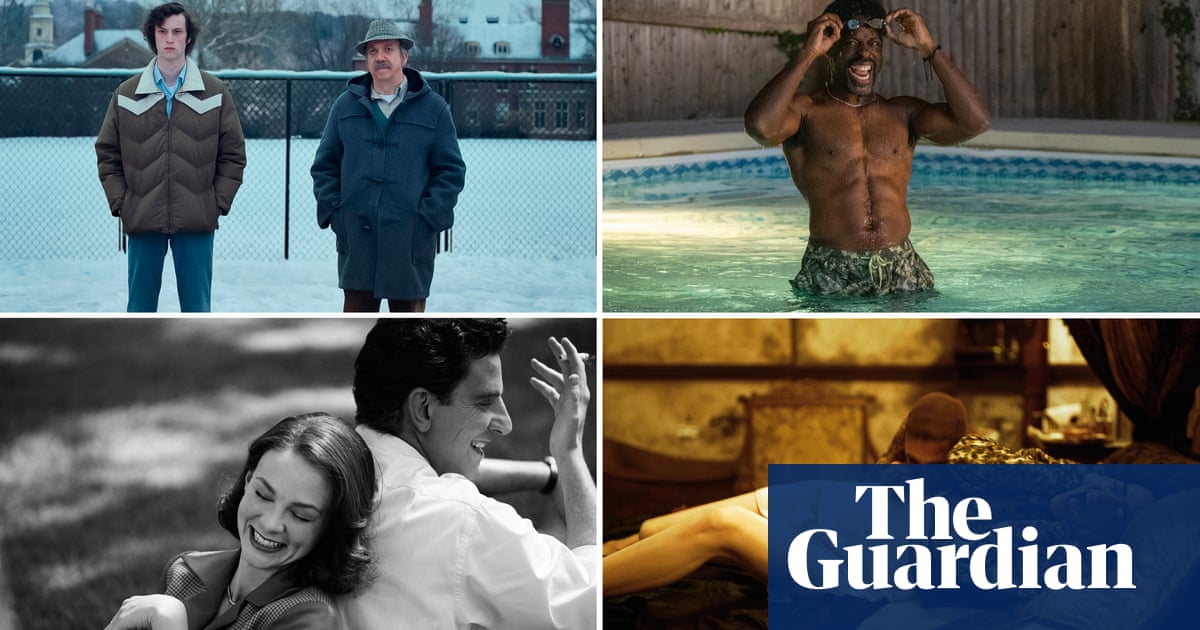
Alasdair Gray was one of Scotland’s most distinctive talents. A Glaswegian artist and writer, he celebrated his native city in tales that combined fantasy with dark urban realism and in paintings that evoked civic life in vivid detail.
He wrote Lanark, one of the greatest British novels of the 20th century; adorned many of the city’s bars, restaurants and stations with his distinctive murals; and inspired a generation of younger Scottish writers, including Iain Banks and Irvine Welsh.
“He was a modern-day William Blake,” says novelist Ali Smith. Or as Sorcha Dallas, custodian of the Alasdair Gray Archive, puts it: “Alasdair is to Glasgow what Charles Dickens is to London or James Joyce is to Dublin.”
Yet a full appreciation of Gray, who died in 2019, has remained elusive outside Scotland. His vision and voice were distinctly Caledonian. However, hopes of a transformation were raised with news that the first major film version of one of his works would be released in 2024. Poor Things won the Whitbread award and the Guardian fiction prize for Gray in 1992, while the film’s director, Yorgos Lanthimos, has already earned three Academy Award nominations for his films The Lobster and The Favourite.
The latter’s credentials are encouraging because Poor Things is an extraordinarily challenging novel: a Victorian, feminist version of Frankenstein that also includes satirical takes on 19th-century fiction, colonialism and medical ethics. In addition, Gray’s story of Bella Baxter and her biological reawakening is tied tightly to actual locations. Bella’s home is given as 18 Park Circus, a real city address, as is Lansdowne church, where she goes to be married. Maps and prints of Glasgow – many drawn by Gray – are included in the book to help readers follow his fantastic narrative. Poor Things reeks of Glasgow.
But not the film. Its screening at the London film festival last October revealed that every mention of the city has been expunged by Lanthimos and instead an odd steampunk version of London is the film’s key setting. For many, it will be like watching The Lord of the Rings without Middle Earth or Titanic without the iceberg.
The point is stressed by Gavin Lundy of YouTube channel Ossian Scotland in its video The Poor Things Problem. “The book is a uniquely Glaswegian and Scottish piece of work. The problem is that it wasn’t filmed in Glasgow or Scotland at all and not a single member of the main cast is Scottish.”
Lanthimos says it would have been “totally disingenuous” of him, as a Greek, to produce a cinematic work about Scotland, while producers Ed Guiney and Andrew Lowe said the decision to frame the film exclusively through the perspective of Bella Baxter – played by Emma Stone – necessitated “some reworking” that included replacing Glasgow with London. “However, we have kept Godwin Baxter – played by Willem Dafoe – as a Glaswegian scientist,” they told the Observer. “The adaptation remains true to the spirit of Alasdair’s work.”
The result is a compelling, often thrilling piece of cinema that won the Golden Lion prize at the Venice film festival, while Stone is tipped as a strong candidate for an Oscar in March. “An amazing and hilarious performance,” as Peter Bradshaw of the Guardian described her depiction of Bella.
It is unclear how audiences will react when the film is released in British cinemas on 12 January, though it is likely Glasgow and Gray will continue as sideshows. For the city, its only claim to cinematic fame will rest on its use as a popular – and cheap – stand-in for American towns that share its grand architecture and grid-style street system. It substitutes for Philadelphia in World War Z; for New York in the latest Indiana Jones outing; and for San Francisco in Cloud Atlas. However, in its own right, it has made little impact – with the sci-fi thriller, Under the Skin, starring Scarlett Johansson, being a rare exception.
Glasgow remains an artistic cipher, as Gray emphasised himself. “Glasgow is a magnificent city,” says a character in Lanark. “Why do we hardly ever notice that? Because nobody imagines living here. Think of Florence, Paris, London, New York. Nobody visiting them for the first time is a stranger because he’s already visited them in paintings, novels, history books and films. But if a city hasn’t been used by an artist, not even the inhabitants live there imaginatively.”
Gray had begun to correct that omission through his books and paintings, finding a place for Glasgow on the literary and artistic maps of the world. This process may have suffered a setback with the film of Poor Things, but will soon be back on track, says Rodge Glass, Gray’s biographer. “If 1% of those who see Poor Things go on to read the book, that means thousands of people who might have known little about Glasgow or Gray will have their eyes opened about the city and the man. That has got to be a good thing.”
A glimpse of Gray’s extraordinary output and his connections with his native city can be seen at his archive. Housed in an old whisky bond on the Forth and Clyde canal, its main room features the desk and chair at which he wrote and painted. It once dominated the bedroom of his little Hillhead flat where he worked and lived in self-imposed poverty, says Dallas.
“He had little time for money and often did his murals – at various bars and other centres – merely in return for payment in food and drink. When he did have money, he often gave it away.” Gray paid for the publication of the first novel by the Scottish writer Agnes Owens, for example, and donated a substantial sum, received as a literary award, to fund miners who were on strike at the time.
Scattered around the room are the minutiae of the life of Gray, who described himself as “a fat, spectacled, balding, old Glaswegian pedestrian who has mainly lived by writing and designing books, most of them fiction.” There is an erratum slip – placed inside copies of his book Unlikely Stories, Mostly – that simply reads: “This slip has been placed here in error.” There are piles of his books, lined up beside his favourite crockery; and shelves of his paintings, drawings, typographical experiments and a host of other personalised knick-knacks.
And for those seeking to follow the real Glaswegian roots of his work, the archive has designed the Poor Things Trail, which begins at Lansdowne parish church on Glasgow’s Great Western Road, the scene of Bella’s interrupted wedding on Christmas Day 1883. The church today is a theatre where staff reacted with indignation during a discussion on the removal of Glasgow and Gray from the film. “Bloody nonsense,” said one.
Further along the trail, visitors reach Park Circus, whose affluent townhouses loom over the city’s West End. Bella was provided with her first home here. Further to the west, the trail reaches Byres Road where the Ubiquitous Chip restaurant, and the bar and auditorium Óran Mór, along with Hillhead underground station, have displays of Gray’s murals. As Glasgow University’s Monica Callaghan, a trustee of the archive, puts it: “Alasdair is entrenched in the bricks and mortar of this city.”
Glass is optimistic about how Gray’s reputation will fare in the wake of the film release. “One of the first silent films was a version of Alice in Wonderland. Since then, it’s been filmed about 30 times – which shows that when you make a film you can never say, this is the definitive version. Poor Things is all about conflicting storytelling, so I think it is now more likely there will be other film versions of it. And who knows, maybe somebody will get so annoyed they will make a Scottish version.”
In fact, plans were made to film Poor Things in Scotland 20 years ago, but the project failed. “Maybe we should be reflecting on why Poor Things wasn’t made up here in the first place,” adds Glass.












